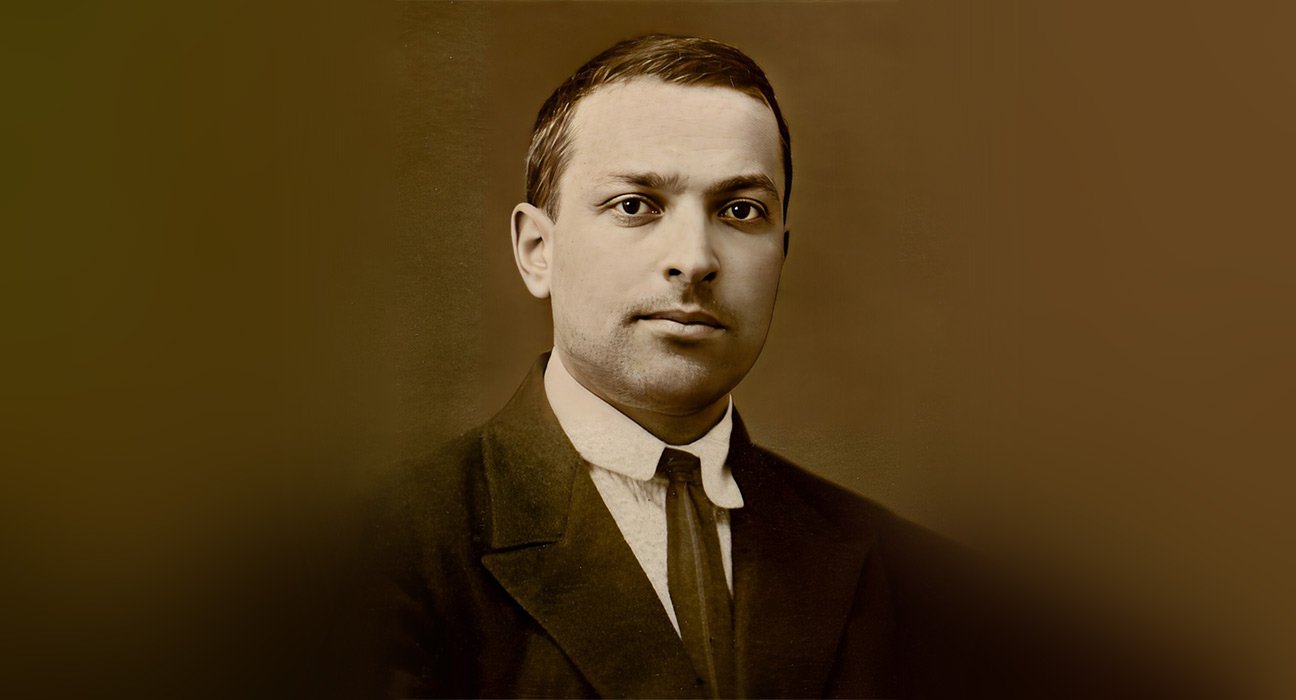Through others we become ourselves
Lev Vygotsky
Lev Vygotsky, a Russian psychologist, contributed to the field of cognitive development through his sociocultural theory. His theory highlights the importance of social interaction in children’s early learning and development. He was born in the year 1896 in a city in Western Russia. Also, he pursued his degree at Moscow University, where he eventually began researching topics such as attention, memory, and learning and, he completed his dissertation in psychology while struggling with a severe medical condition. He died at the young age of 37 due to tuberculosis, but his contributions left a lasting impact on the field of psychology. His contributions to the field of educational and developmental psychology became known years after his death. He has written six books centered around child development, language development, and education.
Sociocultural Theory
The sociocultural theory of Vygotsky views cognitive development as a result of social interaction, where children learn through guided participation and work with their mentors or guides to solve problems. He viewed children as novice learners, learning cognitive strategies and other skills from adult and peer mentors who provide guidance, motivation and assistance. According to Vygotsky, children gradually grow intellectually and function on their own because of the assistance provided by mentors or peers. This theory is based on Marxist philosophy, which emphasises human mastery of the physical world by using and producing tools. Here, tools refer to anything people use to help them learn and think efficiently. Through this interaction, they learn to use the tools that will help them adapt and be successful in their culture (Gauvain & Parke, 2010).
Also Read: The Psychology of Consistency
He states that knowledge should be developed and constructed primarily through social interactions. His theory also emphasizes the role of the cultural context in cognitive development. They gradually and continuously learn from such social interactions. These social interactions facilitate mediated learning, a central theme of his theory. He contends that cultural and social factors play a role in development. As culture and society have established institutions such as schools, they promote development by providing opportunities.
Societal expectations about gender also play a role in children’s understanding of the world. A study conducted by Crowley et al. (2001) at a science museum found how detailed explanations by parents were provided to boys than girls. This shows how gender differences play a role in learning. Vygotsky majorly focused on how social interactions with peers, teachers, parents, neighbors, etc, help children develop their knowledge and enhance their thinking process, beliefs, and values. (Fernyhough,1997, Edwards,2004).
Key Concepts In Vygotsky’s Cognitive Development Theory
Vygotsky’s concept of the Zone of Proximal Development (ZPD) and scaffolding has impacted educators and society. The ZPD refers to the gap between what a child can accomplish independently and what they can achieve with the guidance and support of a more knowledgeable other (MKO), such as a teacher, parent, or colleague. This suggests that cognitive development is not just an individual process, but is fundamentally shaped by social interactions and the assistance provided within a child’s ZPD. The tasks that are difficult for the child to accomplish independently can be mastered with the guidance and assistance of an MKO.

The ZPD represents the difference between a learner’s current level of understanding and their potential level of development under the guidance of a more knowledgeable individual or with the assistance of supportive tools and resources. Vygotsky recognized that children could achieve more with the assistance of a skilled mentor than they could independently. This insight led to the concept of scaffolding, which refers to the temporary support provided by teachers, parents, or peers to help learners bridge the gap between their current abilities and their potential. Scaffolding can take various forms, such as modeling, prompting, questioning, and providing hints or feedback. By tailoring the level of support to the learner’s needs, scaffolding facilitates the internalization of new knowledge and skills, enabling learners to become more independent and capable gradually.
Also Read: 10 Job Roles in the Field of Psychology
Vygotsky’s Insights on Language, Self-Regulation, and Social Competence:
Vygotsky also emphasised the role of language in cognitive growth and development. The use of dialogue as a tool for scaffolding is an example of the important role of language in a child’s development. He believed that language helps children to develop concepts and also helps them to learn to control their behavior. He believed that egocentric or private speech allows children to form thoughts and control actions. It acts as a predecessor for helping children in problem-solving, planning, and self-regulation. He believes that children who use a lot of private speech are likely to be socially competent and communicative and are able to work on challenging tasks.
Piaget Vs Vygotsky
Jean Piaget is a Swiss psychologist who is also famous for his contributions to child development. He acknowledged the role of social interaction but emphasised individual exploration and internal mental processes for the cognitive development of a child. His theory highlights the importance of children actively constructing their understanding of the world through their experiences and interactions. He believed that children progress through distinct stages of development. While Piaget focused on the four stages of development, Vygotsky didn’t propose any specific stages and focused on the continuous nature of development. Piaget acknowledged the role of social and cultural context but did not strongly emphasize it. In contrast, Vygotsky believed that collaborative learning, language, and social interaction play a role in cognitive growth. The major difference in their theories is the importance of sociocultural context, which increases the applicability of Vygotsky’s theory in educational settings.
Teaching Strategies
Vygotsky’s sociocultural theory had major implications for the educational sector and organization. It has led to including collaborative learning approaches, such as cooperative learning, peer tutoring, and reciprocal teaching. The concept of scaffolding has improved teaching practices by providing individualized support and helping children learn to achieve mastery in new skills. Some of the classroom applications of Vygotsky’s theory that is incorporated by educators are as follows:
- Measuring the Zone of Proximal Development (ZPD): Vygotsky suggested measuring a child’s ZPD by presenting tasks of different difficulty levels to determine the child’s current level and then appropriately providing guidance and instruction.
- Teaching children within their ZPD level: The teachers should begin giving instructions at the higher end of the child’s ZPD, which allows children to achieve new skills and knowledge with support. They can be assisted with prompts, questions, encouragement, and opportunities for practice until the child becomes independent.
- Incorporating Peer Learning: Adults and more skilled peers can also serve as a guide for children’s learning. Peer tutoring and collaborative activities enhance cognitive development through social interactions.
- Practical Learning: Educators should provide real-world examples and meaningful experiences instead of abstract concepts. For example, rather than memorising math tables, students can learn to apply math in real-life and practical worlds.
- Transforming the Classroom Environment: A Vygotskian classroom encourages group activities and collaborative learning. In this, teachers act as facilitators and ask questions, respond to student’s doubts, and build on their ideas. One such example of a Vygotskian classroom is The Kamehameha Elementary Education Program (KEEP) in Hawaii, where children are involved in activities such as reading a story and understanding its meaning in small groups. The concept of scaffolding is applied and teachers provide support and guidance to improve student’s skills.

Applying Cognitive Development in Real-Life
Elena Bodrova and Deborah Leong (2007) introduced “Tools of Mind” as part of the early childhood education curriculum. It focuses on children’s self-regulation and cognitive development. In a Tools of the Mind classroom, dramatic play is central, where teachers guide children in creating play scenarios based on their interests, such as treasure hunts, stores, hospitals, or restaurants. The teachers include field trips, visitors, videos, and books to improve children’s play experiences. They also help children to play using imaginary scenes, roles, and props. Research studies on the effectiveness of the Tools of the Mind curriculum have shown that children exhibit more advanced writing skills than children in other childhood programs. They also showed improved self-regulation and cognitive abilities, such as reduced distractions and temptations (Bodrova & Leong, 2007). Other studies have found that this approach improves young children’s overall cognitive development (Barnett & others, 2006; Saifer, 2007).
Also Read: The Power of Autonomy: Why It Matters in Psychology
Sociocultural Theory:
However, Vygotsky’s sociocultural theory remains a pillar of modern psychology. It provides a framework for understanding the complex interplay between social interactions, cultural contexts, and cognitive development. His ideas have continued to inspire researchers, educators, and practitioners. His theory recognises the importance of creating environments with the use of scaffolding and providing opportunities for children to engage in meaningful interactions.
References+
- Santrock, J. W. (2018). A topical approach to life-span development (9th ed.). McGraw-Hill Education.
- Broderick, P. and Blewitt, P., 2014. The Life Span: Human Development for Helping Professionals. 4th ed.
- Ciccarelli S. K. & White J. N. (2012). Psychology (4th custom ed. for the Community College of Baltimore County). Pearson Learning Solutions.
- Feldman, R. S. (2006). Development across the life span (4th ed.). Pearson Education New Zealand.
- Bodrova, E., & Leong, D. J. (2012). Tools of the Mind: Vygotskian approach to early childhood education / E. Bodrova, D.J. Leong. ResearchGate.
- Fernyhough, C. (1997). Vygotsky’s Sociocultural Approach: Theoretical Issues and Implications for Current Research. In S. Hala (Ed.), The Development of Social Cognition. East Sussex: Psychology Press.













Leave feedback about this